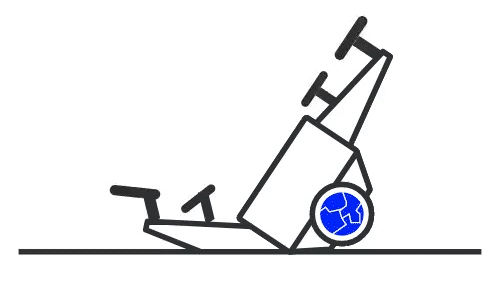Key takeaway: Drone technology is rapidly evolving and certain components break down over time. If you’re noticing multiple hardware and/or software issues (eg sensors), it’s likely time for an upgrade. If you don’t upgrade when you should, you risk bringing inaccuracies into your work that could flow downstream and cause issues in design, procurement, and even installation.
Depending on which source you look at, the average useful life of a drone is anywhere from nine months to five years. Solar Contractors and Surveyors should be asking: can your drone still capture quality data? To answer that, it’s essential to look not just at the age of your drone, but at various factors.
Here are the signals it’s time for an upgrade.
Hardware issues
When the drone’s hardware begins to show its age, you might need to start shopping for a new one.
-
Battery: If your battery drops below 50% of its expected life (e.g., if it should last 60 minutes and barely lasts 30 minutes), you risk wasting a lot of time on-site or buying multiple new batteries. Since batteries are expensive to replace, it might be worth upgrading the whole drone.
-
Propellor: If propellers aren’t in perfect shape, your flight path could wobble (with no amount of pilot skill fixing the problem). Wobbly flight means, first and foremost, a safety issue and can lead to a crash. A wobbly drone can also produce grainy or distorted geo-tagged images (e.g., the correct altitude but incorrect longitude), which flows downstream into design issues.
-
Gimbal: Similar to propellers, a gimbal supports overall image stabilization. If the drone is not calibrated, it will result in poor image quality.
-
Camera: The camera quality is crucial for capturing the images that become a 3D model. While it’s unlikely that the camera will fail, keep an eye out for problems like micro-scratches on the lens, dust inside the camera blocking the lens, or feature issues like auto-focus no longer working. If any of those problems show up, you may want a whole new drone rather than paying for the costly repair. Additionally, camera technology is changing rapidly, so investing in better tech overall to stay current could be worth the investment.
-
Flight controller: For many drones, the flight controller acts as the brain of the operation. If it isn’t working correctly, a pilot can quickly lose control of the drone.
These factors are vital for collecting solar project site data. If any single part starts to break down, it’s time to replace the drone—or risk collecting poor quality data … or potentially you’ll crash first.
Software issues
The drone’s software, mainly its sensors, is critical for all the little details that make a drone fly smoothly and capture images. There are generally two kinds of sensors:
-
Optical (e.g., cameras): These are mostly used for image capture RGB, IRT, etc.
-
Depth (e.g., lasers): These are used for obstacle avoidance, which, for example, helps it land by sensing the depth/distance under the drone.
If your software starts to go, you’re putting yourself at risk of a lower-quality result. Your drone might seem ok to the eye but could lead to issues in official site plans due to drone error.

Manufacturer issues
The technology within a drone is highly complex and regularly updated. Drones might look similar across a period of years, but they could be completely different machines when you examine the details.
Look for manufacturer issues like:
-
Support discontinuation: With limited resources, some manufacturers stop supporting certain drone models—this means you can’t get any help if something goes wrong.
-
Model discontinuation: Manufacturers discontinue models for a handful of reasons, most notably because they have inherent issues with that drone or the manufacturer is releasing a new one. Even if your specific drone doesn’t have any issues, the manufacturer may no longer produce parts for it or offer warranties.
-
Flight app changes: Flight apps change with many new drone models. Some become more sophisticated, which means they might have features that older drone hardware can’t follow. Others lose functionality and may have fewer options. This could lead to flight issues or an inability to take advantage of certain features.
Quality drones mean quality data
The point of having a drone for solar projects is to capture accurate data. It’s not about having a fancy or the newest possible drone—it’s about a stable flight, image capture, and safe flying (obstacle avoidance + landing and takeoff).
If your drone has some wear and tear from regular use, that’s likely not a problem. But if it has any damage that impedes your ability to do your job and collect high-quality data, it’s time for an upgrade. If you don’t upgrade when needed, the result isn’t just an old piece of technology; you’ll notice errors creeping into your work that could easily damage your reputation and destroy customer trust.






